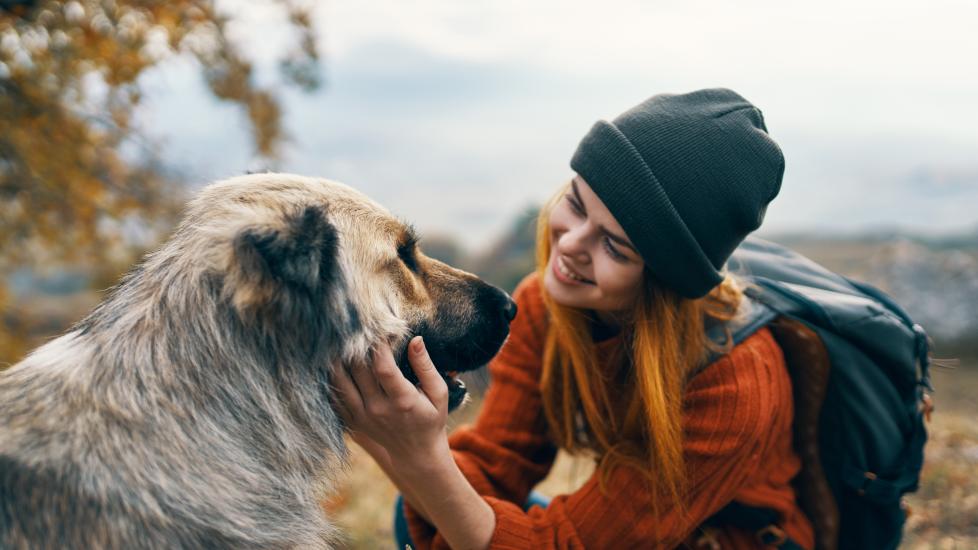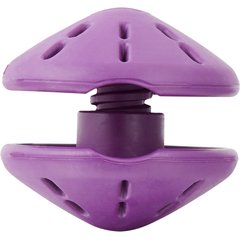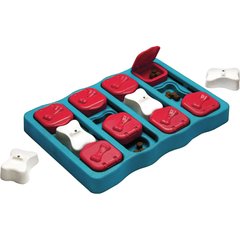Top 6 Common Dog Parent Mistakes
Dogs are one of a kind. It's one of the many reasons why we love them so much. However, with their unique personalities, shapes, and sizes come unique needs.
Many pet parents may accidentally overlook small but important details of their dogs' care. Perhaps you've been there, and you should know you're not alone.
With the help of veterinary and behavioral experts, we've rounded up the six most common
Key Takeaways
- Routine wellness exams for your pet can help prevent potential health problems.
- Avoid underfeeding or overfeeding your dog by speaking with your vet.
- Keeping your pup mentally stimulated will help them lead happy, healthy lives.
1. Skipping Preventative Care
"When it comes to your pet’s health, the best offense is a good defense," says Dr. Efrem Hunter, DVM, MBA, a vet and Director of Veterinary and Scientific Affairs at Blue Buffalo. "Eating well, exercising, and regular doctor visits are all good advice for humans, and the same goes for our dogs."
Routine wellness exams for your pet can help prevent health problems by identifying and addressing risk factors.
Ensure your pet is up to date on all vaccinations before introducing them to others, human or animal.
During routine wellness exams, your vet will do a complete physical exam, including assessment of your dog's body condition score and their teeth, where they will look for signs of dental disease.
They may also check for certain conditions with routine blood draws and urine testing, such as chronic kidney disease.
These exams—which should occur once a year or more—are also a good time to discuss at-home preventive care with your vet.
This includes things like administering monthly flea, tick, and heartworm medications.
Ensure your pet is up to date on all vaccinations before introducing them to others, human or animal.
2. Inappropriate Feeding Based on a Dog's Breed and Age
Pet parents may forget to examine pet food labels closely. Pet foods are typically categorized into three life stages:
-
Puppy. Puppy food is high in fat and other nutrients to support growth and development. It will be labeled as "growth" or "all life stages." Large-breed puppies require large-breed puppy food to support optimal growth rather than rapid growth.
-
Adult. Adult dogs may have different nutritional needs depending on their breed and overall health. For example, small-breed adult dogs may need food with small kibbles that they can easily chew. Overweight adult dogs may benefit from a weight management diet.
-
Senior. Senior dogs are at higher risk of age-related diseases than younger pups, such as arthritis, kidney disease, and cognitive dysfunction. To prevent, manage, or treat these conditions, it's important to work with your vet to choose the best senior diet for your dog. Depending on your pup’s health, your vet may recommend choosing senior dog food with supplements. For instance, omega-3 fatty acids and glucosamine/chondroitin may reduce joint pain and inflammation, and antioxidants may improve brain function.
Avoid the mistake of underfeeding or overfeeding your dog by collaborating with your vet.
While the feeding label on your bag of dog food is a good starting point, every dog has differing calorie needs beyond their current weight.
Your vet can craft a feeding plan that best suits your dog's lifestyle, age, and ideal weight.
If you have a busy schedule, it's easy to fall into a habit of leaving out kibble for your dog to snack on throughout the day.
When you free-feed, it’s easy to overlook just how much your dog is eating. It could lead to weight gain, which can result in medical issues.
Instead, provide pre-portioned meals at set times. This will help you ensure that your puppy or dog is eating the right amount for their size and activity level. Scheduled feedings may help reduce anxiety, too.
Chrissy Joy, a dog trainer for celebrities and host of “The Dog Moms,” says, “Building consistency in their lives helps puppies and dogs know what to expect and how to act.”
3. Not Giving Your Dog Enough Exercise
It's tempting to skip a walk when your day gets busy, or the weather isn't ideal. But this common mistake of not providing dogs with enough exercise can lead to weight gain and behavioral issues.
"Most dogs benefit from at least 30 minutes to two hours of exercise each day,” explains Dr. Mike Greenberg, DVM, a veterinary advisor at GoDog.
However, it can be difficult to know where your pup falls on that spectrum. This can depend on their breed, age, and health. Dr. Greenberg’s chart may help you determine how much exercise your dog needs:
|
Typical energy level |
Amount of exercise needed per day |
Example breeds |
Example activities |
|
High |
At least two hours |
Border Collies, Australian Shepherds, and American Pit Bull Terriers
|
Activities that challenge them physically and mentally, like agility training, swimming, or herding activities. *Puppies seemingly have endless energy. However, Dr. Greenberg says it's important not to overexercise them. "Short bursts of play and walks are ideal, but the emphasis should be on proper socialization and training," he says |
|
Medium |
1–2 hours |
A mix of play, walks, and interactive games. | |
|
Low |
30–60 minutes |
Mental stimulation and leisurely walks
*Senior dogs may have reduced mobility, so it is important to adjust their exercise routine to be gentler. However, it’s still essential for them to go on regular walks and engage in light play, as well as training sessions to keep them mentally sharp. |
4. Not Giving Your Dog Enough Mental Stimulation
When dogs start displaying unwanted behaviors, such as excessive barking, chewing furniture, or digging in the yard, it can be frustrating for pet parents.
However, what many pet parents don't realize is that these behaviors may be caused by a lack of mental stimulation.
When you engage in mental activities with your dog, you're contributing to their brain health and keeping them happy, says Dr. Hunter.
Dr. Greenberg’s favorite ways to keep dogs mentally stimulated include:
-
Nina Ottosson Brick Puzzle: A popular interactive puzzle toy that requires dogs to uncover hidden treats using their problem-solving skills.
-
Treat-dispensing balls: Such as the Busy Buddy Twist 'n Treat, are designed to hold treats inside. As your dog plays with the ball, treats slowly dispense, providing mental stimulation and motivation to keep playing.
-
Snuffle Mats: Designed to stimulate a dog's natural foraging instincts and provide mental enrichment. The mat is made of soft, durable fabric with long strands or strips that create a shaggy texture. Toss treats into the mat and watch your dog search!
-
Nylabones: Designed for heavy chewers, these durable toys can keep dogs engaged and satisfy their natural chewing instincts.
Recommended Products
5. Not Socializing Your Dog
Socialization, or the process of exposing your dog to new people, animals, and experiences in a positive way, plays a key role in shaping your dog's approach to interacting and getting along with others.
Socialization is most important during a puppy’s critical socialization period, from age 3 to 16 weeks. But despite common belief, practicing socialization doesn’t end after puppyhood.
“It's essential to continue socializing dogs throughout their lives to maintain their positive social behaviors,” Joy says. “For adult dogs who haven't had early socialization, gradual exposure to new experiences can still be beneficial with patience and positive reinforcement.”
Dr. Greenberg recommends scent walks as a great way to socialize dogs of all ages. Unlike traditional walks, scent walks are led by your pup’s sense of smell. Allow your pup plenty of time to stop and sniff.
Other socialization activities include:
-
Behavioral classes
-
Doggy playdates
-
Group walks
-
Leisurely walks and observing others from a distance
-
Visiting dog-friendly establishments
Socialization is most important during a puppy’s critical socialization period, from age 3 to 16 weeks.
6. Not Budgeting for Health and Emergencies
An emergency vet visit can cost anywhere from $100 for the initial exam to $5,000 for hospitalization and surgery. Yet 35% of adults say they don’t have the funds to cover emergency bills exceeding $400.
“Getting a big veterinary bill is not a part of the plan, but it can certainly happen,” says Dr. Hunter.
For some pets and their humans, pet insurance can be a great way to bring down the cost of some of these bills, whether they’re routine procedures or unexpected ones.
If you're not sure if pet insurance is right for you, talk to your vet or a certified agent at the pet insurance company. They can help you assess your pet's health needs and risks, and they may offer payment plans or low-cost alternatives for care.
As you review care and payment options with your vet, consider a realistic budget that you can set aside for emergencies.
Rather than blowing your entire monthly budget on a trip to the ER, plan and have a savings fund dedicated just for your pup.


